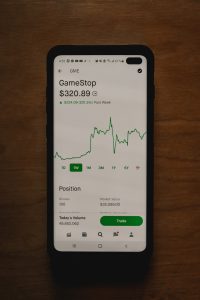Advanced Volume Trading Techniques for Forex Traders
Volume is a powerful tool in the forex market that can provide valuable insights into market dynamics and help traders make more informed trading decisions. While many traders are familiar with basic volume analysis, there are advanced volume trading techniques that can take their trading to the next level. In this article, we will explore some of these techniques and how they can be applied in forex trading.
1. Volume Profile
Volume profile is a technique that analyzes the volume traded at different price levels over a given period. It helps traders understand the distribution of volume and identify key support and resistance levels. By plotting volume against price on a horizontal histogram, traders can see where the majority of trading activity is occurring.
To apply volume profile in forex trading, traders can use specialized indicators or charting platforms that provide volume profile functionality. By analyzing the volume profile, traders can identify areas of high volume, which often act as strong support or resistance levels. This information can be used to determine entry and exit points, as well as potential profit targets.
2. Volume Divergence
Volume divergence occurs when price and volume move in opposite directions. For example, if price is making higher highs, but volume is decreasing, it could indicate a weakening trend. Conversely, if price is making lower lows, but volume is increasing, it could suggest a potential reversal or trend continuation.
To spot volume divergence, traders can compare the volume indicator with price action. If there is a discrepancy between the two, it could be a signal that the current price trend is losing momentum. Traders can then look for additional confirmation signals, such as trendline breaks or candlestick patterns, to enter or exit trades.
3. Volume Oscillators
Volume oscillators are technical indicators that measure the relationship between price and volume. They can help traders identify overbought or oversold conditions, as well as potential trend reversals. The most commonly used volume oscillators are the On-Balance Volume (OBV) and the Chaikin Money Flow (CMF).
The OBV indicator calculates the cumulative volume based on whether prices close higher or lower than the previous day. If the OBV is rising, it suggests that buying pressure is increasing, indicating a potential uptrend. Conversely, if the OBV is declining, it suggests that selling pressure is increasing, indicating a potential downtrend.
The CMF indicator combines price and volume to measure the flow of money into or out of a security. A positive CMF indicates buying pressure, while a negative CMF indicates selling pressure. Traders can use the CMF to confirm the strength of a trend or identify potential trend reversals.
4. Volume Spread Analysis (VSA)
Volume Spread Analysis (VSA) is a methodology that combines volume analysis with price action to identify the market’s intentions. It focuses on the relationship between volume, price, and spread (the difference between the high and low of a price bar). By analyzing the interplay between these factors, traders can gain insights into market manipulation, accumulation or distribution phases, and potential trend reversals.
VSA techniques include analyzing the relationship between volume and spread, identifying climactic volume (extreme volume spikes), and observing the interaction between volume and price bars (i.e., how volume confirms or contradicts price movements). Traders can use VSA to confirm or invalidate trading signals and increase their confidence in their trading decisions.
In conclusion, advanced volume trading techniques can provide valuable insights into market dynamics and help forex traders make more informed trading decisions. By incorporating techniques such as volume profile, volume divergence, volume oscillators, and volume spread analysis, traders can gain a deeper understanding of market trends, identify key support and resistance levels, and improve their overall trading performance. However, it is important to note that volume analysis should not be used in isolation but in conjunction with other technical analysis tools for a comprehensive trading strategy.





